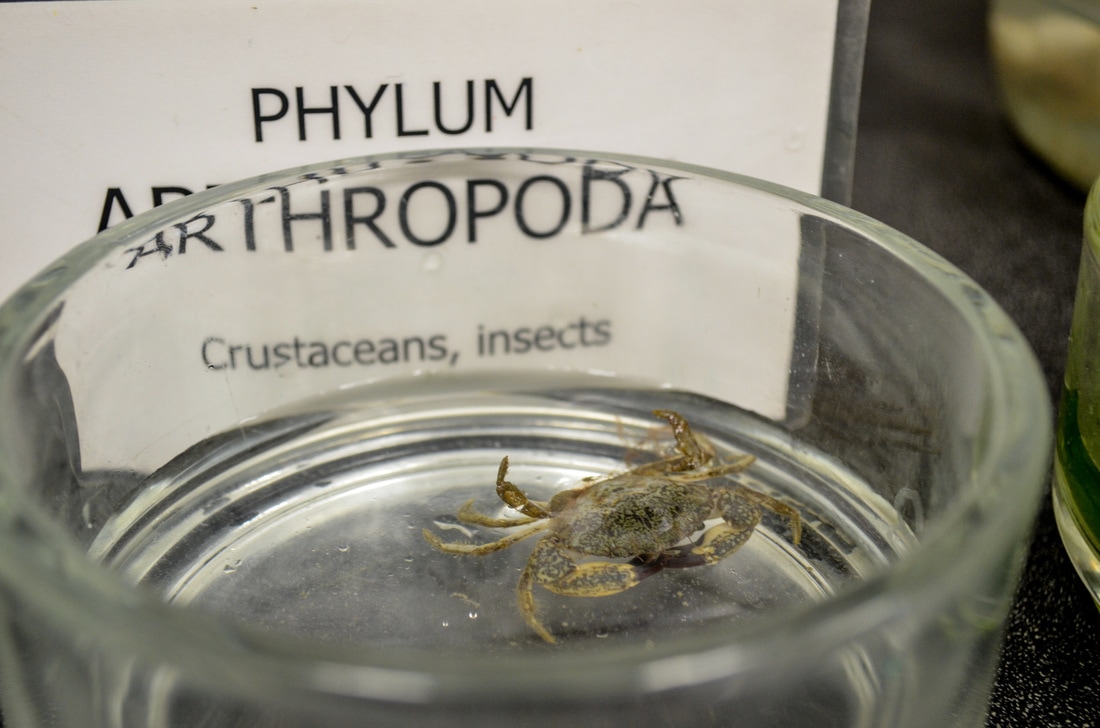|
Panopeus herbstii, also known as the Atlantic mud crab or the black-fingered mud crab, lives in salt marshes and reefs along the East Coast, and is common in the waters of the Chesapeake. Their sandy brown color makes them tough to spot, but look for these small crustaceans in brackish waters underneath rocks or in clumps of seaweed. The crabs have also been known to hide in bottles, cans, and other trash. It’s fortunate that the black-fingered mud crab has been able to adapt to this pollution, however, other types of human impact still pose a threat to the species.
There's two ways you can tell if a crab is a black-fingered mud crab just by looking at its claws. One is to look for dark colored tips on the ends, or "fingers," of its claws, and the other characteristic to look for is a "tooth" on the larger of the crab's two claws. They use this larger claw to hunt their prey. Common prey for the mud crab is the marsh periwinkle snail. Black-fingered mud crabs help maintain healthy snail populations, and this benefits marsh ecosystems because if snail populations get too high, they could destroy the plant life in a wetland. Keep an eye out for these cute crustaceans next time you are near a marsh!
1 Comment
fail
3/20/2023 01:13:17 pm
Did not answer my question
Reply
Leave a Reply. |
About
Everything you need to know about CBFS's educational programs, visiting Chincoteague Island, and more! Categories
All
Archives
January 2019
|
CHINCOTEAGUE BAY FIELD STATION | 34001 Mill Dam Road | Wallops Island, VA 23337 | (757) 824-5636 | [email protected]

 RSS Feed
RSS Feed

